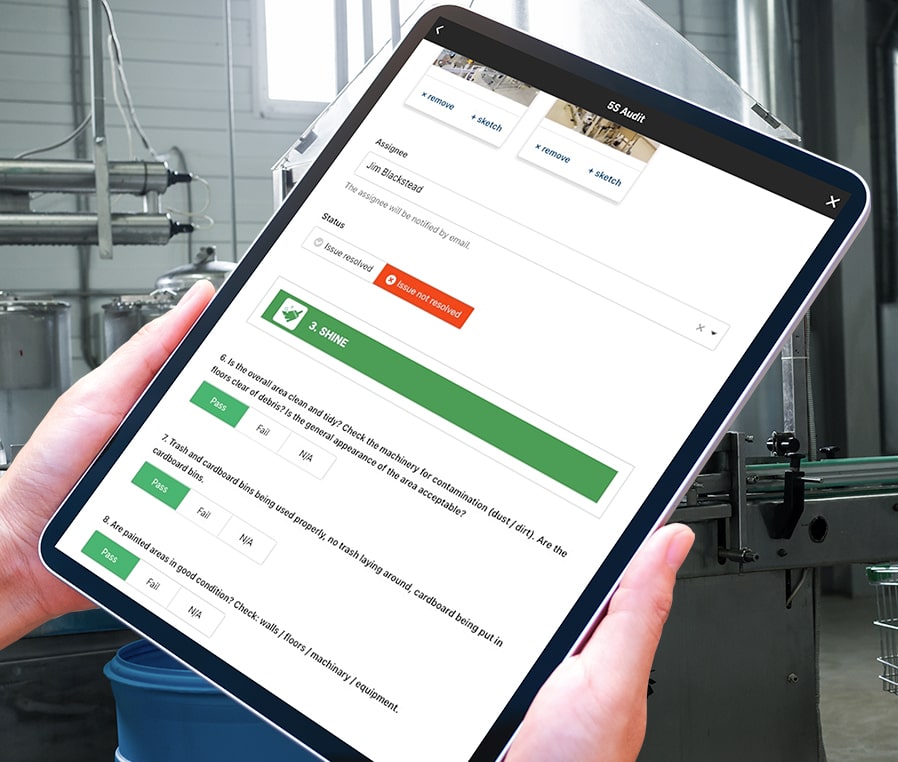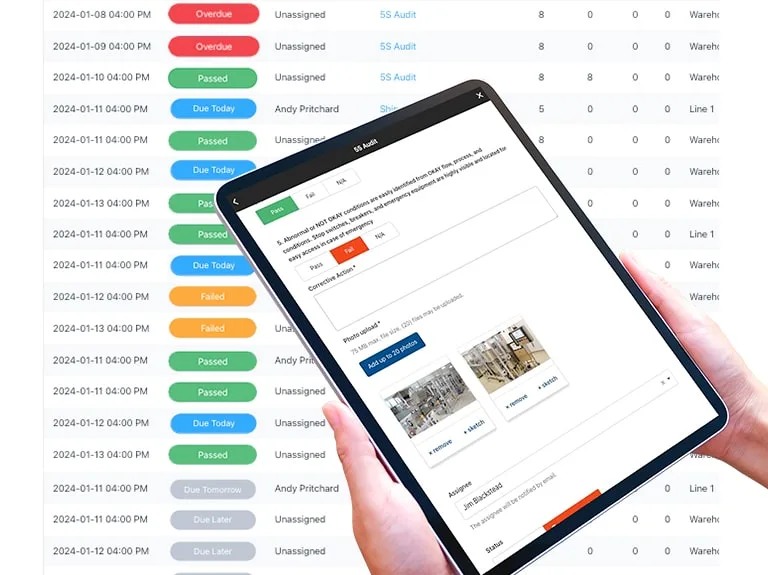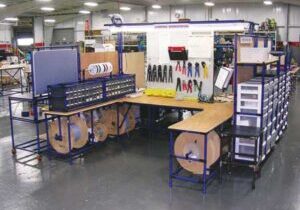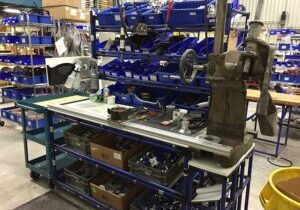How to Sustain with 5S Auditing
Practical guide to sustaining 5S and continuously improving workstation productivity.
By Andy Pritchard | February 5, 2022 | 5 minute read.
Although Sustain is only one of the 5 principles of the 5S methodology, it encompasses 90% of the work. Sustain is the long-tail of 5S. And it is where the real results lie. It is also, conversely, the stage in which most 5S programs fail.
In order to realize the benefits of 5S, you must ensure principles are sustained using an efficient and effective 5S auditing program. This article outlines what sustain means, the benefits of an efficient auditing program and a simple and practical way to ensure success.
Once you have planned your 5S program and optimized the workstations, you will build materials that help you standardize the process.
Standardization creates uniformity and consistency in work practices, processes, and visual controls across the organization, leading to increased efficiency, safety, and sustained improvements.
Sustain is how you put your standardization work into action.
Sustain entails creating habits, routines, and practices that uphold the established standards of cleanliness, organization, and efficiency. It involves fostering a mindset among employees to consistently follow the 5S principles, making it a part of the organizational culture. Sustaining the 5S principles requires regular reinforcement, training, monitoring, and continuous improvement efforts to prevent regression and ensure lasting positive changes within the workspace.
By far, the most crucial factor in sustaining 5S is scheduled audits.
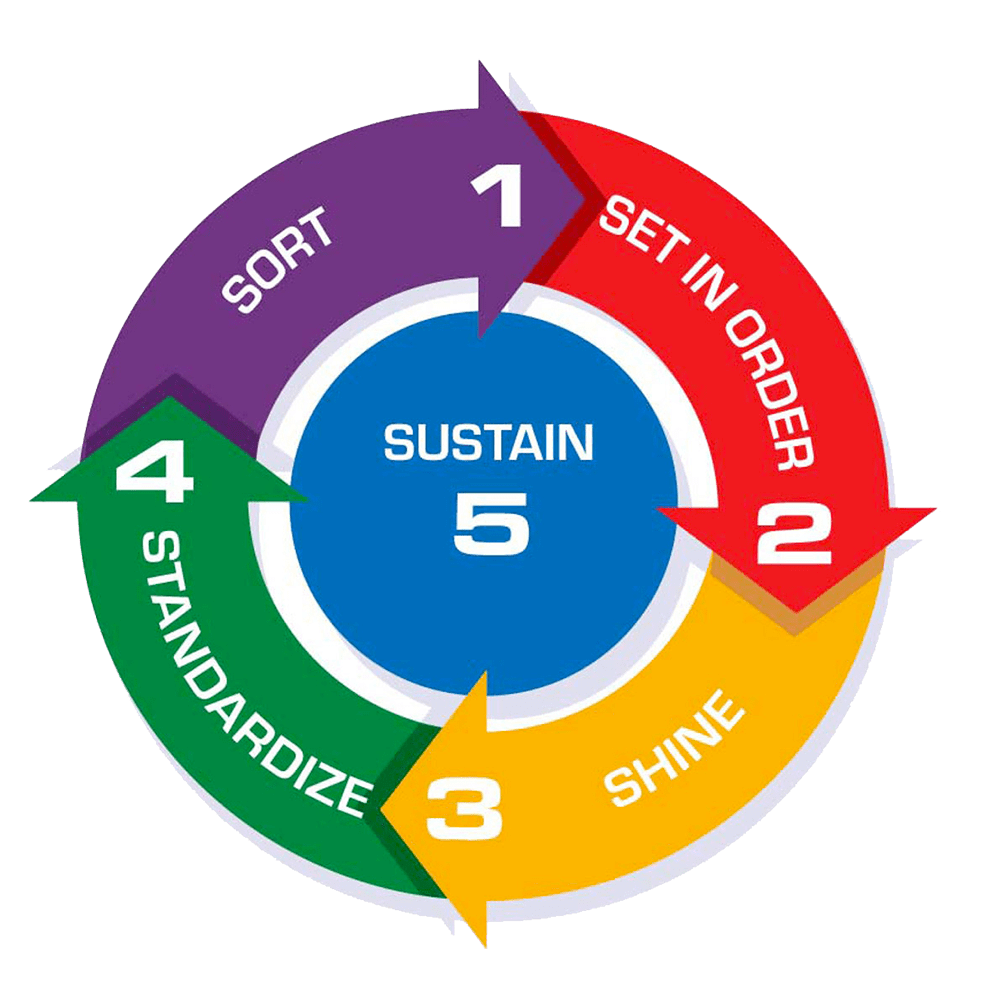
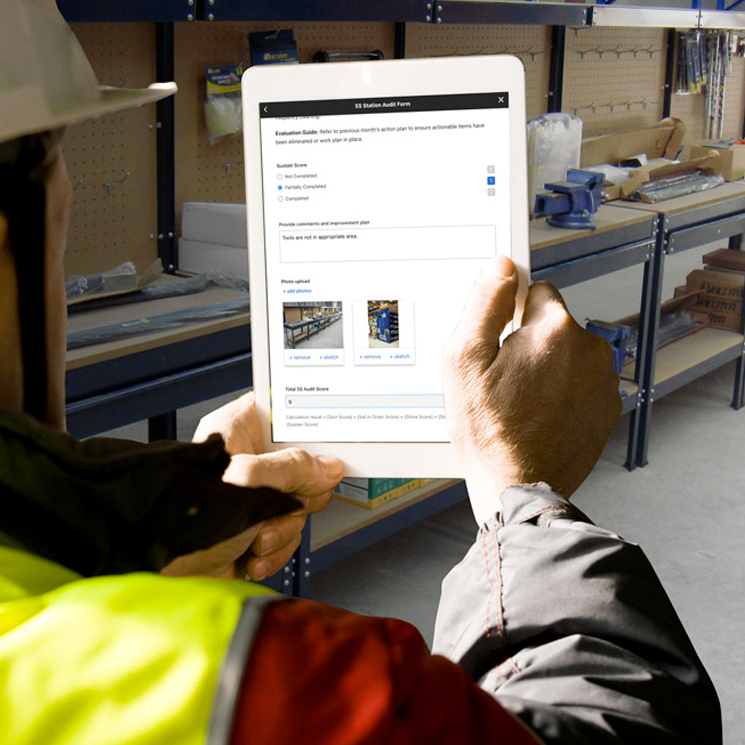
5S Auditing: A step-by-step guide
1. Establish Audit Criteria and Checklists
Establishing audit criteria is a crucial step in conducting effective 5S audits. These criteria serve as the guidelines or standards against which the workspace will be evaluated during the audit process.
Use the criteria to develop a checklist outlining specific items or areas to be evaluated under each of the 5S categories. This checklist helps auditors systematically assess the workspace.
2. Train Auditors
Ensure that the individuals conducting the audit are trained in the 5S principles, the audit process, and using the audit checklist effectively. Communicate the established audit criteria clearly and ensure they understand how to apply the criteria consistently during audits. They should understand what to look for and how to assess compliance.
Also, train auditors on how to use the checklists effectively and communicate its purpose and importance to all involved stakeholders.
If you have digitized your 5S audit process using digital forms, you will need to train your auditors on how to access and use the system.
3. Schedule Audits
Establish a regular schedule for conducting audits. Scheduling audits in a systematic and consistent manner ensures that the workspace's adherence to 5S principles is regularly assessed, providing opportunities for improvement and sustaining the desired standards over time.
Decide on the frequency of audits based on the nature of the workspace, its size, complexity, and the organization's needs. Audits can occur daily, weekly, monthly, quarterly, or even semi-annually.
4. Conduct Audits
Perform the audits using the established checklist. Evaluate each area against the defined criteria for Sort, Set in Order, Shine, Standardize, and Sustain. Document findings, noting areas of compliance and areas needing improvement.
5. Generate & Review Reports
Compile audit findings into comprehensive reports. These reports should include observations, areas of non-compliance, improvement recommendations, and any notable successes.
Review the audit reports with relevant stakeholders, including employees working in the audited areas. Discuss findings, celebrate successes, and identify action items for improvement.
6. Implement Corrective Actions & Follow up Audits
Develop action plans to address areas identified for improvement. Assign responsibilities, set deadlines, and track progress on implementing necessary changes.
Conduct follow-up audits to assess the effectiveness of implemented changes and to track progress. Continuous monitoring ensures sustained adherence to 5S principles.
Continue Reading
Why is 5S important?
5S is often one of the first lean manufacturing processes companies implement on their continuous improvement journey.
The Benefits of 5S
Aside from the cultural shift towards lean manufacturing that quick 5S wins can bring for your teams, there are over 50 years of well documented benefits worth discussing.
Step-by-Step Facility-wide Implementation Roadmap
The phases of implementation including the objectives, step-by-step execution strategies, resource necessities, and timeline estimations for each phase.
Practical Guide to 5S Sorting
How to effectively identify and remove unnecessary items from workstations to radically enhance productivity.
Overview of 5S Methodology
The 5S System is a lean manufacturing tool designed to improve efficiency and productivity in your plant by making it more organized and efficient.
How to Standardize in 5S
Ensure processes, procedures, and practices adhere to a defined standard, facilitating consistency and predictability in manufacturing.
How to Shine in 5S
A Practical Guide to Ensuring Workstations are Clean and Standardized for Success.
How to execute the 5S Set in Order Step
Practical guide for enhancing workstation orderliness to increase productivity, efficiency and employee engagement.
How to create a 5S Audit Checklist
The phases of implementation including the objectives, step-by-step execution strategies, resource necessities, and timeline estimations for each phase.
How does 5S work?
The 5S methodology is built on 5 easy to remember steps that have a natural flow to them as each step builds upon the success of the last.

